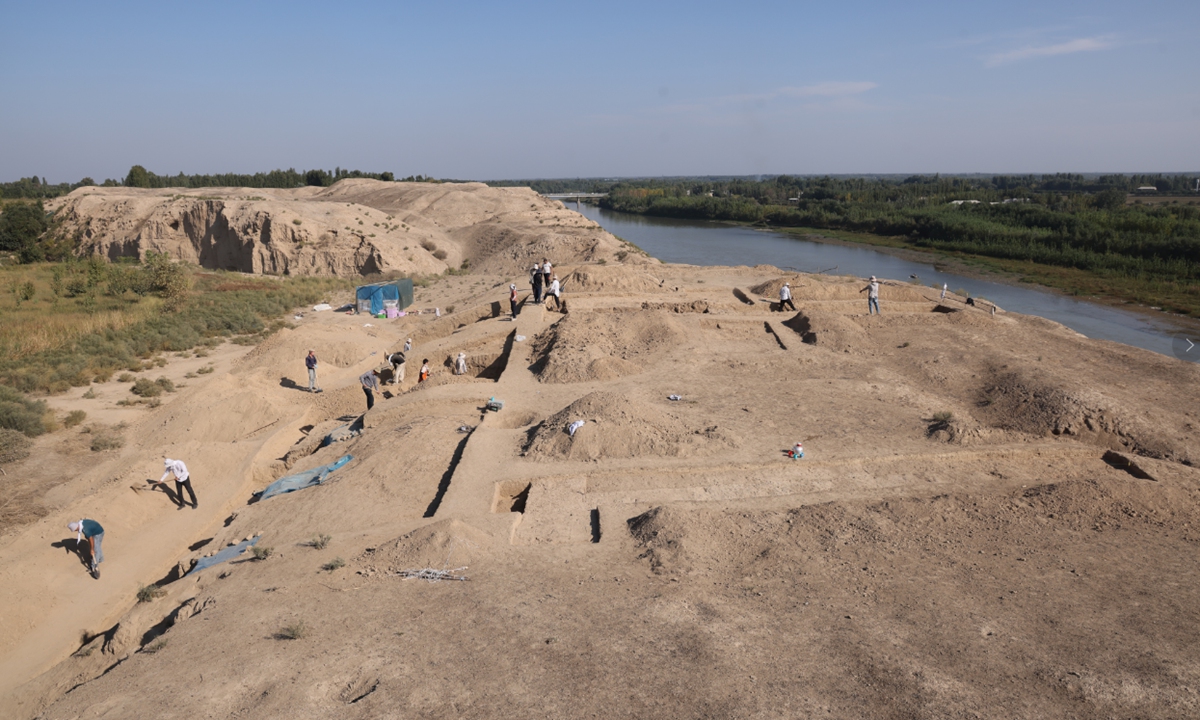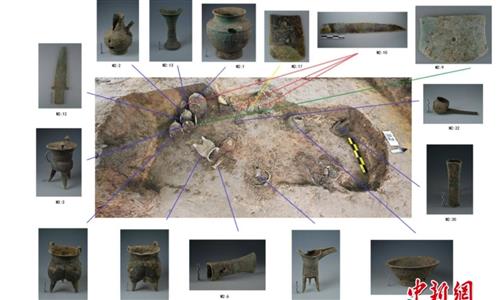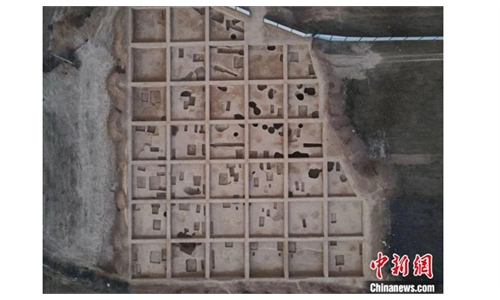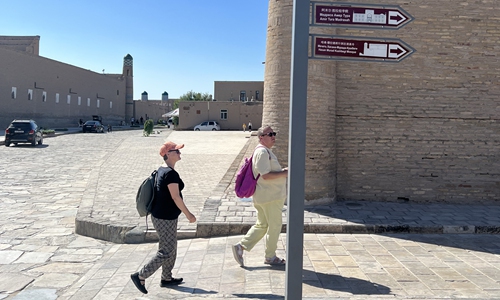ARTS / CULTURE & LEISURE
China-Uzbekistan joint archaeology project makes new discovery

The Mengchaktepa site in Uzbekistan Photo: Courtesy of Liu Tao
A joint Chinese and Uzbek archaeological team has made a new discovery at the renowned Mengchaktepa site, the nearest ancient city site in Uzbekistan to China, further confirming its pivotal role as a node on the ancient Silk Road.The Mengchaktepa site, located on the northern bank of the Syr Darya River in Uzbekistan, is an archaeological treasure trove and once was a crucial geographical location along the Silk Road.
The site, often referred to as "The Living Fossil of the Silk Road," has been the focus of a joint archaeological project carried out by the Chinese Academy of Social Sciences (CASS) and the Institute of Archaeology of the Academy of Sciences of Uzbekistan since 2012, according to a press release CASS sent to the Global Times on Thursday.
Liu Tao, an archaeologist from CASS and the Chinese executive leader of the China-Uzbekistan joint archaeological team, told the Global Times on Thursday that the team has discovered seven tombs and two other buildings, along with a wealth of artifacts including silk fragments, leather products, bronze mirrors, round square-holed coins, and beads.
"The silk fragments, which were in particularly good condition, clearly exhibit marks of weaving, marking the first discovery of silk at the site since 1986 and filling the recent 40-year gap in the discovery of silk in the Fergana Valley," he said.
Anarbaev Abdulkhamidjon, a professor from Uzbekistan's National Center for Archaeology, highlighted the significant contributions of Chinese scholars in an interview with the Global Times.
Their expertise in site protection, holistic extraction techniques, and meticulous indoor excavation has enhanced field archaeology in Uzbekistan, particularly in on-site cultural relic conservation. Furthermore, these advancements have demonstrated the latest achievements in Chinese archaeological development on a global stage.
Liu recalled that the motivation of the joint cooperation is to trace the history and culture of this region that was recorded in ancient Chinese texts during the Qin and Han dynasties (221BC-AD220).
History books record that the Western Han Dynasty's (206BC-AD25) imperial emissary Zhang Qian once established friendly exchanges between ancient China and its neighbor in Central Asia - Dayuan, which was located in today's Fergana Valley in Uzbekistan.
After Zhang Qian embarked on his journey west, alfalfa and grapes from Dayuan, the first station on Zhang's route, were introduced to China, while Chinese silk and paper, and advanced well-drilling, iron smelting and sericulture techniques were gradually spread to Europe through Dayuan and other Central Asian countries, which had a profound impact on the exchange and integration of Eastern and Western civilizations.
The 1986 excavation of the Mengchaktepa site revealed nine large cave tombs, complete with well-preserved human remains and a variety of grave goods, including colorful silk clothing fragments and ornaments such as necklaces and earrings. The tombs date back to the 5th to 8th centuries, the press release noted.
Liu introduced that this year's excavation aims to further define the scope of the tomb area, understand the distribution of the tombs, and re-examine the structural and chronological details of the tombs and their burial artifacts.
The team has implemented temporary protective measures for the large number of organic remains found at the site, including items weaved from silk, leather, and reeds, and plans to extract the relics for further detailed cleaning and analysis in a laboratory setting to preserve and extract as much information as possible.
"The discoveries at the Mengchaktepa site provide a clear representation of the burial systems, customs, beliefs, and architectural forms in the Fergana Valley during the early medieval period, enriching our understanding of the cultural landscape and connotations of the region," Liu said, adding that the presence of silk, Han-style bronze mirrors, round square-holed copper coins, and Zoroastrian-related relics are evidence of the basin's significant role in the ancient Silk Road and cultural exchanges.




